Shemya photos, page 3
(Post-WWII)


1. This photo was taken around August, 1975. There
are several different species of seals that visit
Shemya, in addition to the Sea Lions that find their
way here every year about this time. I managed to
slip into the water while taking some of these
photos...cold! (George L. Smith, Coord T5)
2. While the birds occupy the upper lofts of these
rocky apartments, the Sea Lions prefer the ground
level. The Sea Lions show up in late summer, the
males stake out their turf, battle for a harem, do
their thing, then take off again for another year.
There were many such living arrangements around
the north and east end of the Island. The white
colored rocks are not whitewashed, but are so
colored from bird droppings deposited from above.
August or September, 1975. (Coord T4) (George L
Smith)

3. Now here's a whale of a tale..or is it a tail of a
whale? This guy beached on Shemya's shores one day
for some unknown reason. 1975-1976 (George L.
Smith, Coord W9)

4. There were numerous dogs on the Island. One of
them seems to have always been named "Boozer."
The Boozer on duty when I was there apparently died
of alcohol poisoning. That's me on the left, Mike
Segebarth on the right. 1975-1976 (George L Smith,
Coord S5)

5. Having been stationed at Minot, North Dakota for
over 4 years and having had to wear what I would
define as a real parka while stationed there, the
Shemya version wasn't quite as elaborate or warm
by comparison. Even though the wind would blow
over 100 mph and we would get a fair amount of
snow, the temperatures never seemed to get below
around 28 degrees Fahrenheit. Nevertheless, the
Shemya standard issue parka in 1975 wasn't quite
up to par. (George L Smith)

6. While on a clear day you couldn't necessarily see
forever, you could see Agattu Island just to the West
of Shemya. If there were a dotted line drawn in the
water, you could also see the dateline about 100
miles or so on the other side. (P. Gallaher, Coord A7)

7. This picture is the same as the one above, after the
"fog monster" departed. Some of the Island’s older
radomes and radars can be seen in the background.
(George Blood. Coord J5)

8. This aircraft didn't survive. "Rivet Ball,"
otherwise known as "Nancy Rae" then later
renamed to "Wanda Belle," Model JKC-135A/RC-135S,
Tail # 59-1491, crashed at Shemya AFS during landing
operations on the 13th of January, 1969 at around
12:30am. Jim Alspaugh put about 500 hours behind
the throttle of this modified KC-135 in 1965. There
were major concerns about a North-South wind with
an East-West runway! For photo of Wanda Bell
taxiing, click here. (George L. Smith. Coord B8).
9. The C5s and C-141s were our supply workhorses.
Shemya has a 10,000 foot grooved runway which
made landingings a little less hazardous under some
of Shemya's foulest weather. Transported Power
Station Components for Cobra Dane. (George L.
Smith, Coord L10).
10. Here's another shot of America’s old protective
electronic “eyes,” the FPS-17 radar antennas. Taken
around 1977. (George Blood, Coord L3)


![Walk-way to GE Radomes, No Fog! [George Blood]](index_htm_files/56375.jpg)
![Walk-way to GE Radomes, No Fog! [George Blood]](index_htm_files/75385.png)
![The Remains of JKC-135A (RC-135S) Recon Aircraft on Shemya. [George L. Smith]](index_htm_files/112724.jpg)
![The Remains of JKC-135A (RC-135S) Recon Aircraft on Shemya. [George L. Smith]](index_htm_files/75758.png)
![C5 Landing at Shemya AFS. [George L. Smith]](index_htm_files/56377.jpg)
![C5 Landing at Shemya AFS. [George L. Smith]](index_htm_files/75874.png)

![Shemya's FPS-17 Radar Antenntas. [George Blood]](index_htm_files/56379.jpg)
![Shemya's FPS-17 Radar Antenntas. [George Blood]](index_htm_files/75920.png)
![Seals Around Shemya! [George L. Smith]](index_htm_files/56408.jpg)
![Seals Around Shemya! [George L. Smith]](index_htm_files/112726.png)
![Birds & Sea Lions Abound Around Shemya! [George L. Smith]](index_htm_files/56409.jpg)
![Birds & Sea Lions Abound Around Shemya! [George L. Smith]](index_htm_files/105176.png)
![A Dead Whale Beaches on Shemya. [George L. Smith]](index_htm_files/81281.jpg)
![A Dead Whale Beaches on Shemya. [George L. Smith]](index_htm_files/112727.png)
![George L. Smith (L), Mike Segebarth (R), Shemya 1975-76. [George L. Smith]](index_htm_files/56411.jpg)
![George L. Smith (L), Mike Segebarth (R), Shemya 1975-76. [George L. Smith]](index_htm_files/75877.png)
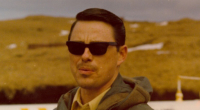
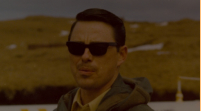

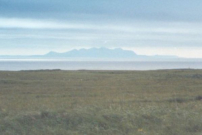
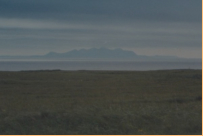

Current Update: 06/17/2022 6:24
Shemya photos, page 3
(Post-WWII)


1. This photo was taken
around August, 1975.
There are several different
species of seals that visit
Shemya, in addition to the
Sea Lions that find their way
here every year about this
time. I managed to slip into
the water while taking some
of these photos...cold!
(George L. Smith, Coord T5)
2. While the birds
occupy the upper lofts
of these rocky apartments,
the Sea Lions prefer the
ground level. The Sea Lions
show up in late summer,
the males stake out their
turf, battle for a harem, do
their thing, then take off
again for another year.
There were many such
living arrangements around
the north and east end of
the Island. The white
colored rocks are not
whitewashed, but are so
colored from bird droppings
deposited from above.
August or September, 1975.
(Coord T4) (George L Smith)

3. Now here's a whale
of a tale..or is it a tail
of a whale? This guy
beached on Shemya's
shores one day for some
unknown reason. 1975-1976
(George L. Smith, Coord W9)

4. There were
numerous dogs on the
Island. One of them seems
to have always been named
"Boozer." The Boozer on
duty when I was there
apparently died of alcohol
poisoning. That's me on the
left, Mike Segebarth on the
right. 1975-1976 (George L
Smith, Coord S5)

5. Having been
stationed at Minot,
North Dakota for over 4
years and having had to
wear what I would define
as a real parka while
stationed there, the
Shemya version wasn't
quite as elaborate or warm
by comparison. Even
though the wind would
blow over 100 mph and we
would get a fair amount of
snow, the temperatures
never seemed to get below
around 28 degrees
Fahrenheit. Nevertheless,
the Shemya standard issue
parka in 1975 wasn't quite
up to par. (George L Smith)

6. While on a clear day
you couldn't
necessarily see forever, you
could see Agattu Island just
to the West of Shemya. If
there were a dotted line
drawn in the water, you
could also see the dateline
about 100 miles or so on
the other side. (P. Gallaher,
Coord A7)

8. This aircraft didn't
survive. "Rivet Ball,"
otherwise known as
"Nancy Rae" then later
renamed to "Wanda Belle,"
Model JKC-135A/RC-135S,
Tail # 59-1491, crashed at
Shemya AFS during landing
operations on the 13th of
January, 1969 at around
12:30am. Jim Alspaugh put
about 500 hours behind
the throttle of this
modified KC-135 in 1965.
There were major
concerns about a North-
South wind with an East-
West runway! For photo of
Wanda Bell taxiing, click
here. (George L. Smith.
Coord B8).
9. The C5s and C-141s
were our supply
workhorses. Shemya has a
10,000 foot grooved runway
which made landingings a
little less hazardous under
some of Shemya's foulest
weather. Transported
Power Station Components
for Cobra Dane. (George L.
Smith, Coord L10).
10. Here's another
shot of America’s old
protective electronic
“eyes,” the FPS-17 radar
antennas. Taken around
1977. (George Blood, Coord
L3)

![The Remains of JKC-135A (RC-135S) Recon Aircraft on Shemya. [George L. Smith]](index_htm_files/81244.jpg)
![The Remains of JKC-135A (RC-135S) Recon Aircraft on Shemya. [George L. Smith]](index_htm_files/112448.png)
![C5 Landing at Shemya AFS. [George L. Smith]](index_htm_files/56377.jpg)
![C5 Landing at Shemya AFS. [George L. Smith]](index_htm_files/112449.png)
![Shemya's FPS-17 Radar Antenntas. [George Blood]](index_htm_files/56379.jpg)
![Shemya's FPS-17 Radar Antenntas. [George Blood]](index_htm_files/112450.png)
![Seals Around Shemya! [George L. Smith]](index_htm_files/56408.jpg)
![Seals Around Shemya! [George L. Smith]](index_htm_files/112451.png)
![Birds & Sea Lions Abound Around Shemya! [George L. Smith]](index_htm_files/56409.jpg)
![Birds & Sea Lions Abound Around Shemya! [George L. Smith]](index_htm_files/112452.png)
![A Dead Whale Beaches on Shemya. [George L. Smith]](index_htm_files/81281.jpg)
![A Dead Whale Beaches on Shemya. [George L. Smith]](index_htm_files/112752.png)
![George L. Smith (L), Mike Segebarth (R), Shemya 1975-76. [George L. Smith]](index_htm_files/56411.jpg)
![George L. Smith (L), Mike Segebarth (R), Shemya 1975-76. [George L. Smith]](index_htm_files/112753.png)




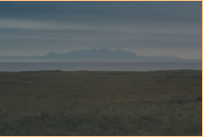

Current Update: 06/17/2022 6:24
![Walk-way to GE Radomes, No Fog! [George Blood]](index_htm_files/56375.jpg)
![Walk-way to GE Radomes, No Fog! [George Blood]](index_htm_files/75914.png)
7. This picture is the
same as the one
above, after the "fog
monster" departed. Some
of the Island’s older
radomes and radars can be
seen in the background.
(George Blood. Coord J5)








































